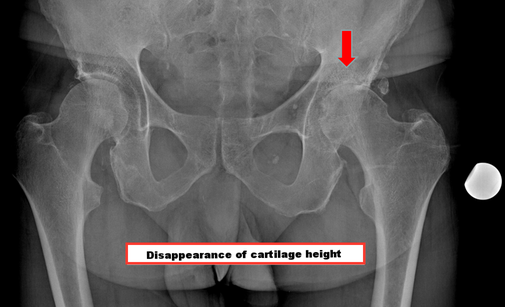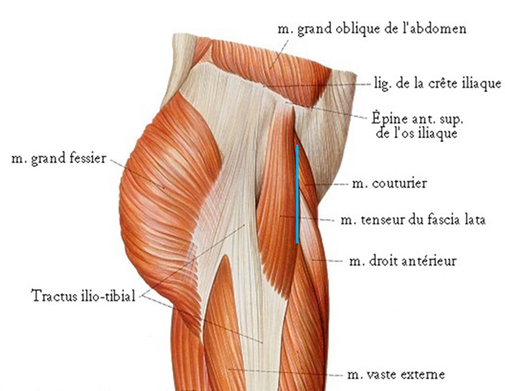FROM HIP ARTHROSIS TO PROSTHESIS
Hip arthritis
Walking pain, difficulty to get up, limping, difficulty in reaching one's feet (shoes), these are some of the signs of hip wear.
X-rays of the hip confirm the diagnosis : the cartilage has lost its height, pelvis and femur are rubbing, bone against bone.

When to have surgery?
If the radio confirms the diagnosis, it is the intensity of your suffering and not the radio that justifies the intervention.
Suffering is not going to work out, although fortunately osteoarthritis pain often develops in a push rather than a continuous aggravation.
If level 1 or 2 analgesics, or anti-inflammatories do mask the symptoms well, pass your turn for the operation.
If they do not work, the intervention has a sufficiently dramatic effect on pain and quality of life, to take the step, regardless of age.

Intervention by direct anterior approach for hip prosthesis
This is the very classic way to make a hip prosthesis in France! This approach was developed by one of the fathers of French orthopedics, Professor Judet at Garches Hospital near Paris in the
40s, taking over the work of a German surgeon of the 19th century, Hueter.
Because it required a certain learning curve, it had not much been spread compared to other approaches, less respectful of the muscles.
It inspires a great enthusiasm today thanks to the diffusion of his teaching well beyond university studies, the benefits of this approach being recognized by all.
Advantages of direct anterior approach for hip prosthesis
Minimally invasive: after the incision of the skin with a width of palm, no muscle or tendon will be cut.
It is the weapon of choice against dislocations (0.1%) since the muscular and tendinous hip envelope is preserved. No postoperative constraint against dislocations.
This is the royal road for early rehabilitation (RAAC).
The surgeon and the physiotherapist go to see you in the room to watch you get up the day of the intervention.
As you did the preparation you already know how to kick and save your hip (it will stir a little at first).
The support is complete.
You will leave the clinic after taking the stairs one to two days later.
If it was to be necessary, you may stay longer.
Preparation for direct anterior approach for hip prosthesis
To go faster in your medical care, it is necessary to anticipate it.
Pre-operative rehabilitation, information, pre-anesthesia check-ups, preparation of the return at home, are essential.
The maximum attention leads to the minimum medicalization of your visit to the clinic.
The entire medical and paramedical team accompanies you to transform the course of care into a walk of health.



Ce site a été conçu avec Jimdo. Inscrivez-vous gratuitement sur https://fr.jimdo.com